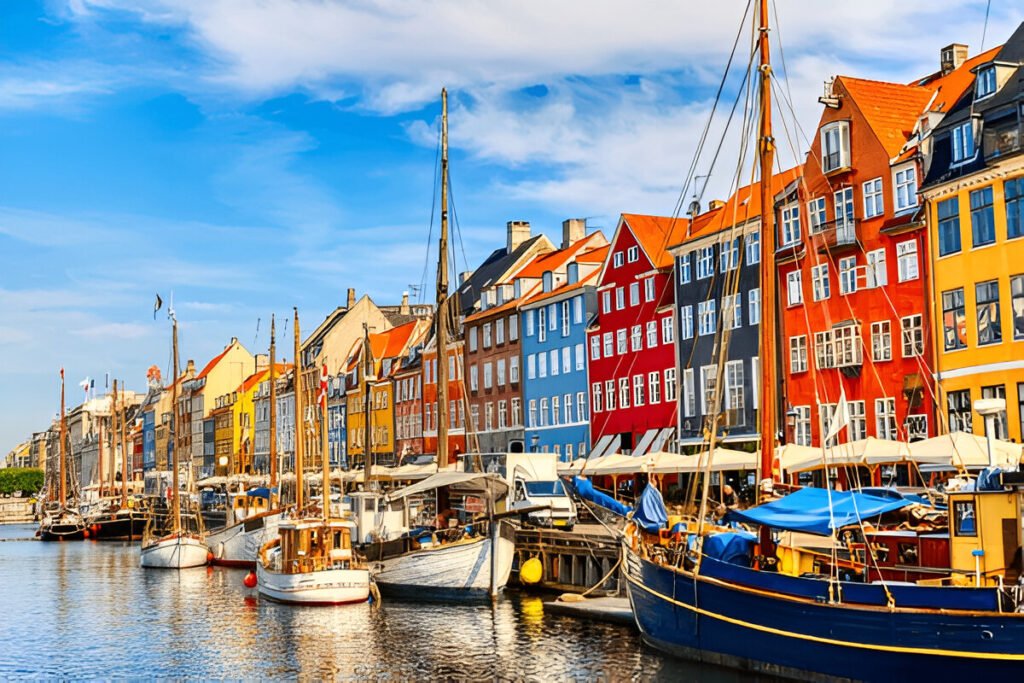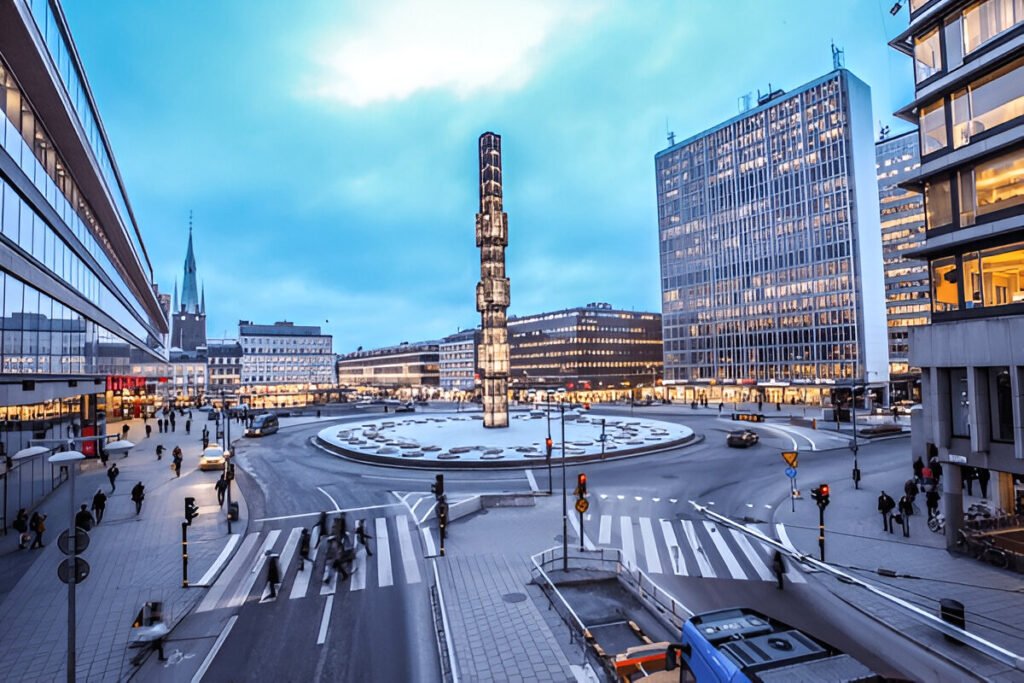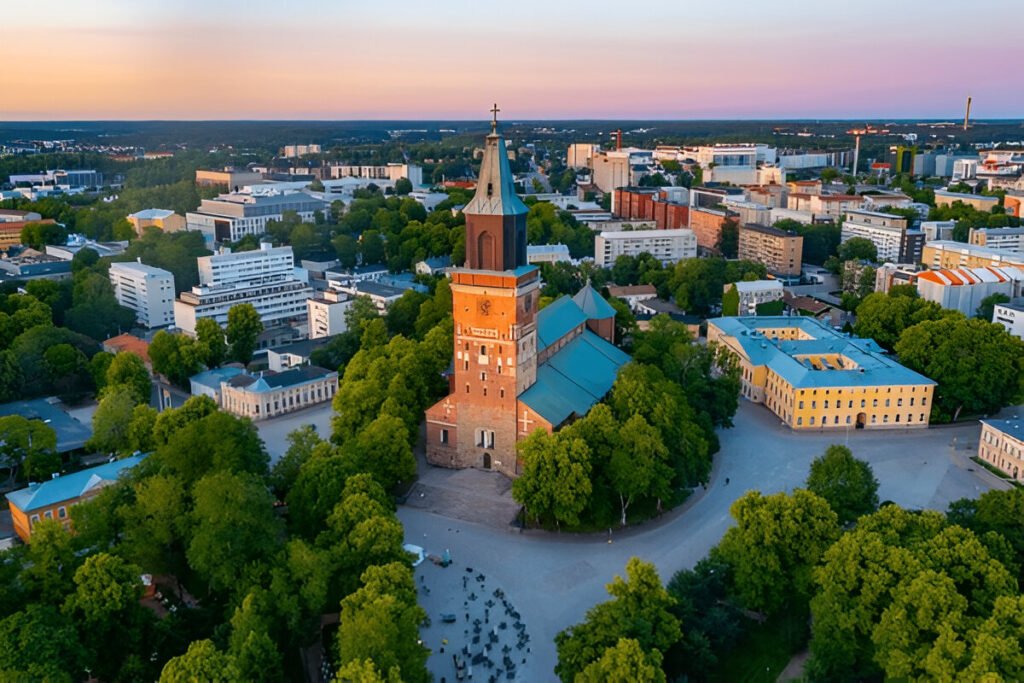Introduction
Scandinavia is a region renowned for its rich architectural history, blending ancient traditions with cutting-edge contemporary designs. From Viking settlements and medieval castles to sleek, modern structures, the Scandinavian architectural landscape offers a vast array of styles and influences. The region’s design ethos is deeply rooted in functionality, simplicity, and a strong connection to nature, which is evident in both its historic buildings and modern constructions.
In this guide, we’ll explore the must-see architectural sites across Denmark, Sweden, Norway, and Finland. These locations showcase the best of Scandinavian design, from iconic landmarks to hidden gems that reflect the region’s unique architectural heritage.
Copenhagen, Denmark: A Blend of Classic and Contemporary

Nyhavn
One of the most iconic images of Copenhagen is the colorful buildings along Nyhavn, the city’s bustling harbor. Built in the 17th century, these narrow houses have become a symbol of the Danish capital’s blend of old-world charm and modern vibrancy.
Highlights:
- The colorful facades line the canal and are home to restaurants and cafes.
- Historically, Nyhavn was a busy port where merchant ships docked.
Tips:
- Take a canal tour to view the buildings from the water.
The Royal Danish Playhouse (Skuespilhuset)
Designed by Danish architect Lundgaard & Tranberg, this contemporary building on the harbor’s edge is a marvel of modern architecture. Its minimalist design integrates seamlessly with Copenhagen’s skyline while offering stunning views of the water.
Highlights:
- The building’s glass exterior offers a transparent view of the harbor and the city.
- It houses a theater, restaurant, and public spaces, inviting both locals and visitors to experience its beauty.
Stockholm, Sweden: A City of Palaces and Modern Masterpieces

The Royal Palace
Situated in the heart of Stockholm, the Royal Palace is a stunning example of Baroque architecture. Built in the 18th century, it serves as the official residence of the Swedish royal family and is one of the largest palaces in Europe.
Highlights:
- The palace features over 600 rooms and a collection of royal artifacts.
- The Royal Chapel and the Treasury are key sites within the palace complex.
Tips:
- Don’t miss the changing of the guard ceremony that takes place daily in front of the palace.
The Stockholm Public Library
Designed by the Swedish architect Gunnar Asplund, the Stockholm Public Library is a masterpiece of functional design and simplicity. The building’s round, domed shape and classic style make it an architectural icon in the city.
Highlights:
- The library’s central reading room, with its circular layout, offers a striking visual experience.
- It is considered one of the best examples of Swedish functionalism.
Tips:
- Explore the surrounding park for a peaceful retreat after your visit to the library.
Oslo, Norway: Where Nature Meets Design

The Oslo Opera House
Located at the edge of the Oslofjord, the Oslo Opera House is a remarkable feat of modern architecture. Designed by Snøhetta, this building is famous for its sloping roof, which visitors can walk on, offering panoramic views of the fjord and the city.
Highlights:
- The roof is designed to look like an iceberg floating on the water.
- Inside, the grand hall is an excellent example of Scandinavian minimalist design.
Tips:
- The Opera House is accessible year-round, but it’s particularly beautiful at sunset.
Akershus Fortress
This medieval fortress, built in the late 13th century, offers a glimpse into Oslo’s rich history. The fortress was once used as a royal residence and military stronghold and is now a key historical site.
Highlights:
- The fortress offers stunning views of the Oslofjord and the surrounding city.
- It features a blend of architectural styles, including medieval, Renaissance, and modern influences.
Tips:
- Explore the museums within the fortress, which provide a deeper look into Norway’s history.
Helsinki, Finland: The Intersection of Function and Beauty

The Helsinki Cathedral
One of the most recognizable landmarks in Finland, the Helsinki Cathedral is an example of neoclassical architecture at its finest. Built in the mid-19th century, it stands tall over Senate Square with its gleaming white facade and green dome.
Highlights:
- The cathedral’s imposing columns and symmetrical design evoke a sense of grandeur.
- Inside, the church is simple yet elegant, with soaring ceilings and a peaceful ambiance.
Tips:
- Climb the steps to the cathedral for an excellent view of the surrounding area.
The Temppeliaukio Church (Rock Church)
Designed by the architect brothers Timo and Tuomo Suomalainen, the Rock Church is carved directly into solid rock. This innovative design blends the raw natural environment with modern architecture, creating a unique, serene atmosphere.
Highlights:
- The church is famous for its copper dome and stunning acoustics, making it a popular venue for concerts.
- The interior is made of exposed rock, creating an earthy, grounding feeling.
Tips:
- Visit the church in the morning for fewer crowds and a tranquil experience.
The Viking Ship Museum, Oslo, Norway
The Viking Ship Museum in Oslo offers a fascinating look at Viking history and architecture. The museum houses several well-preserved Viking ships, which provide insight into the maritime culture that was essential to Scandinavian society.
Highlights:
- The Oseberg Ship, one of the world’s best-preserved Viking ships, is on display.
- The museum showcases Viking burial artifacts and models of Viking life.
Tips:
- Combine your visit to the Viking Ship Museum with a trip to the nearby Fram Museum to learn about Norwegian polar exploration.
Modern Scandinavian Design: The New Wave

The Swedish Centre for Architecture and Design
Located in Stockholm, this modern building is dedicated to promoting contemporary architecture and design. The center hosts exhibitions that showcase Sweden’s innovative approach to sustainable architecture and urban planning.
Highlights:
- The building itself is a contemporary design, with a striking exterior and eco-friendly features.
- Exhibitions cover topics such as green building materials and sustainable architecture.
Tips:
- Check the exhibition schedule before visiting to ensure you experience the most relevant displays.
The Copenhagen Contemporary Art Center
This is one of the largest contemporary art spaces in Scandinavia and a hub for modern architectural design. Housed in an industrial warehouse, the building blends contemporary art with an innovative architectural style.
Highlights:
- The center’s exhibitions often explore the intersection of architecture, design, and art.
- The building itself features stark, minimalist lines and open, flexible spaces that encourage creativity.
Tips:
- Visit the café inside the center to enjoy local Danish pastries and a view of the harbor.
Sustainability in Scandinavian Architecture

Scandinavia is also known for its emphasis on sustainability and eco-friendly architecture. Many buildings in the region, from residential homes to large public projects, incorporate green design principles to reduce environmental impact.
Green Building Examples
- The Cactus Tower in Copenhagen: A skyscraper designed with energy-efficient technology and rooftop gardens.
- The City Hall in Helsinki: Known for its green initiatives and sustainable materials.
Tips for Sustainability Tours:
- Look for eco-tours that highlight buildings and neighborhoods that are leading the way in sustainable design.
Conclusion
From the towering Royal Palaces of Stockholm to the minimalist beauty of Helsinki’s Rock Church, Scandinavian architecture offers a fascinating journey through time. Whether you’re drawn to the elegance of ancient castles, the sleek lines of modern design, or the natural beauty that blends with architectural creativity, Scandinavia has something to offer every architecture enthusiast.
With its unique combination of history, innovation, and a deep respect for nature, the region stands as a beacon of design excellence. Embark on a journey through Scandinavia’s architectural gems and discover the lasting impact of this region on global architecture.











